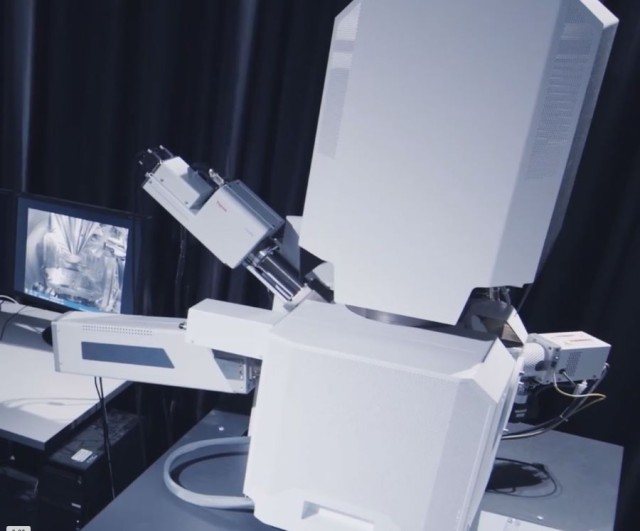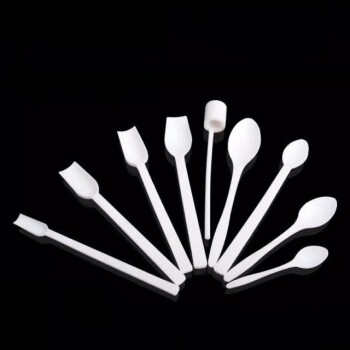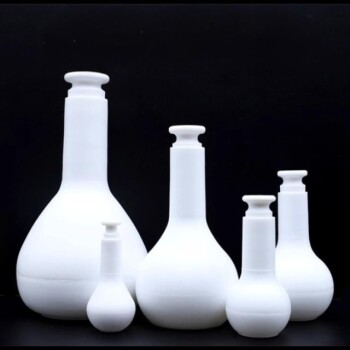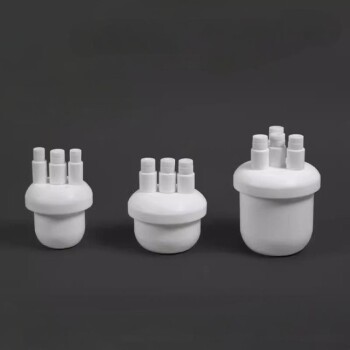Nuclear Magnetic Resonance Spectrometer (NMR)
Sample Purity and Solubility
For optimal performance in Nuclear Magnetic Resonance (NMR) spectroscopy, the sample must meet stringent purity and solubility criteria. Specifically, the sample should exhibit a purity level exceeding 95%, ensuring it is devoid of contaminants such as iron filings, dust, and other extraneous materials. This high level of purity is crucial to obtain clear and accurate NMR spectra, free from interference from impurities.
In cases where the NMR instrument is designed to analyze only liquid samples, the sample must be fully soluble in specific deuterium-based solvents. These solvents include chloroform, heavy water (D₂O), methanol, acetone, dimethyl sulfoxide (DMSO), benzene, o-dichlorobenzene, acetonitrile, pyridine, acetic acid, and trifluoroacetic acid. The choice of solvent often depends on the specific characteristics of the sample and the desired resolution and sensitivity of the NMR analysis.
| Solvent | Common Uses |
|---|---|
| Chloroform | Widely used for organic compounds, provides good solubility and resolution. |
| Heavy Water (D₂O) | Ideal for aqueous solutions and certain organic compounds. |
| Methanol | Effective for a variety of organic samples, including alcohols and esters. |
| Acetone | Suitable for ketones and other polar organic compounds. |
| DMSO | Excellent solvent for polar and non-polar compounds, often used in biological NMR. |
| Benzene | Used for aromatic compounds, provides high-resolution spectra. |
| o-Dichlorobenzene | Effective for aromatic compounds with high solubility requirements. |
| Acetonitrile | Commonly used for polar organic compounds, including amides and nitriles. |
| Pyridine | Suitable for nitrogen-containing compounds, provides good solubility. |
| Acetic Acid | Used for carboxylic acids and related compounds. |
| Trifluoroacetic Acid | Effective for highly polar compounds, often used in peptide and protein studies. |
Ensuring the sample's solubility in these solvents is essential to achieve a homogeneous solution, which is critical for obtaining reliable and reproducible NMR data. The solubility requirement not only facilitates the analysis process but also enhances the quality of the resulting spectra, making it easier to interpret and draw meaningful conclusions.
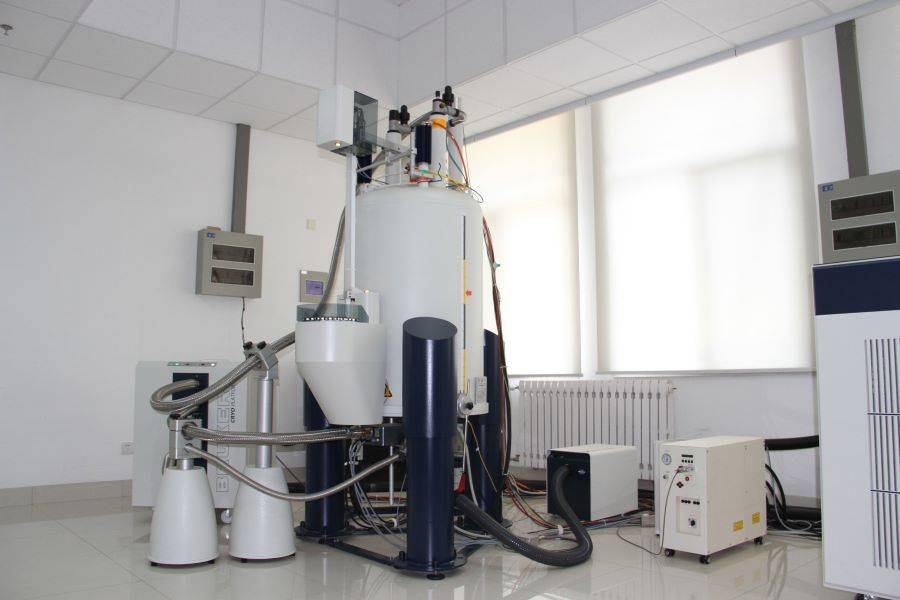
Sample Structure and Special Requirements
When preparing a sample for Nuclear Magnetic Resonance (NMR) spectroscopy, understanding the sample's structure and origin is crucial. The sample's molecular framework can significantly influence the spectral outcomes, thus necessitating a thorough analysis of its chemical environment.
For instance, the detection temperature plays a pivotal role, as it can affect the mobility and interaction of molecules within the sample. Optimal temperature settings can enhance spectral resolution and minimize noise, thereby improving data quality. Additionally, the spectral width must be carefully specified to capture the full range of frequencies relevant to the sample's molecular structure.
| Requirement | Description |
|---|---|
| Detection Temperature | Ensures molecular mobility and interaction are optimized for accurate spectra. |
| Spectral Width | Defines the frequency range to capture all relevant molecular interactions. |
These special requirements are not merely technical details but are integral to the precision and reliability of the NMR analysis. By meticulously adhering to these guidelines, researchers can ensure that their NMR results are both comprehensive and accurate.
Infrared Spectrometer (IR)
Sample Purity and Drying
Ensuring the sample is sufficiently pure and properly dried is crucial for obtaining accurate and reliable results in infrared spectroscopy. Pre-purification processes are essential to remove any impurities that could interfere with the spectral analysis, such as dust, iron filings, or other contaminants. This step is vital as impurities can lead to misleading peaks in the spectra, which may obscure the true characteristics of the sample.
Moreover, the sample must be thoroughly dried to prevent water peaks from appearing in the spectra. Water, being a highly polar molecule, produces strong absorption bands in the infrared region, which can overlap with the bands of interest from the sample. This overlap can complicate the interpretation of the spectra and may even damage the instrument over time due to the presence of moisture.
To achieve optimal results, samples should be dried using appropriate techniques such as vacuum drying or desiccant use, ensuring that all traces of water are removed. This not only helps in maintaining the integrity of the instrument but also ensures that the spectral data is free from water-related artifacts, thereby enhancing the accuracy and reliability of the analysis.
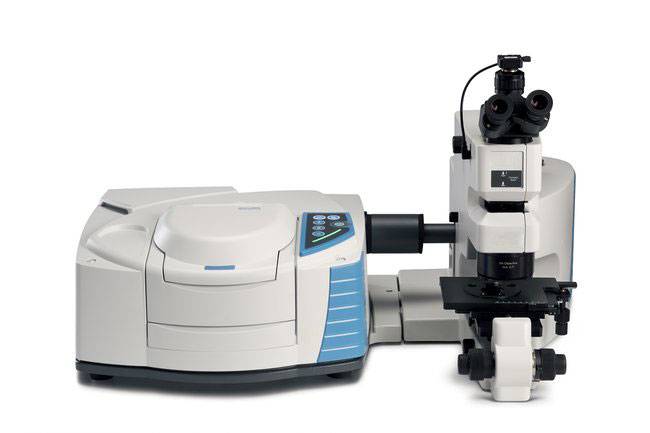
Volatile and Corrosive Samples
When dealing with volatile, sublimable, or thermally unstable samples, it is crucial to use containers equipped with sealed lids or plugs to prevent any loss or alteration of the sample due to exposure to air or changes in temperature. These containers should be designed to maintain the integrity of the sample throughout the analysis process.
For toxic and corrosive samples, the use of sealed containers is not only recommended but mandatory. These containers must be robust enough to withstand the chemical properties of the sample and prevent any leakage that could pose safety risks or damage the equipment. Additionally, it is essential to clearly label these containers to indicate their hazardous nature. This labeling should include specific warnings and instructions, ensuring that all personnel handling the samples are aware of the potential risks.
Furthermore, the sample analysis task sheet should also be updated to reflect the presence of toxic and corrosive materials. This documentation is vital for maintaining a safe working environment and ensuring that all necessary precautions are taken during the analysis process. By adhering to these guidelines, laboratories can minimize risks and ensure the accuracy and reliability of their analytical results.
Mass Spectrometers (MS)
Organic Mass Spectrometer
The Organic Mass Spectrometer (OMS) is a powerful analytical tool designed to scrutinize both liquid and solid organic compounds within a relative molecular mass range of 50 to 2000 atomic mass units (u). This instrument is particularly adept at identifying and characterizing organic molecules, making it indispensable in fields such as chemistry, biochemistry, and pharmaceuticals.
Sample Requirements:
-
Purity: The sample should ideally be a pure single component, as impurities can significantly distort the mass spectra. High purity ensures accurate and interpretable results, minimizing the risk of misidentification or misinterpretation of the data.
-
Form: Both liquid and solid samples are acceptable, provided they fall within the specified molecular mass range. Liquids can be directly injected, while solids may require dissolution or other preparatory steps to facilitate analysis.
Key Considerations:
-
Solubility: While not explicitly mentioned in the original text, solubility can be a critical factor for solid samples. Ensuring that the sample is soluble in a suitable solvent can enhance the ionization process and improve the quality of the mass spectra.
-
Preparation: Proper sample preparation is crucial. This includes ensuring that the sample is free from contaminants and that any necessary pre-treatment steps (such as drying or purification) are meticulously performed.
By adhering to these guidelines, researchers can maximize the efficiency and reliability of their OMS analyses, yielding high-quality data that can be confidently used for further study and interpretation.
Gas Chromatography - Mass Spectrometer (GC-MS)
The Gas Chromatography - Mass Spectrometer (GC-MS) employs capillary columns to separate and analyze compounds. This sophisticated instrument requires that the sample be capable of complete vaporization within the operating temperature range of the column. This prerequisite is crucial for ensuring accurate and reliable results, as incomplete vaporization can lead to skewed data and misinterpretations.
To achieve optimal performance, the sample preparation process must be meticulously managed. The sample should be in a form that can be fully vaporized without decomposing or altering its chemical structure under the column's operating conditions. This typically involves selecting samples with appropriate volatility and thermal stability.
Additionally, the choice of capillary column plays a significant role in the GC-MS analysis. Different columns have varying temperature ranges and selectivity, which can affect the separation efficiency and the ability to vaporize the sample. Therefore, it is essential to choose a column that aligns with the sample's properties to ensure comprehensive vaporization and effective chromatographic separation.
In summary, the GC-MS technique relies heavily on the sample's ability to vaporize within the column's temperature range. Proper sample selection and preparation, along with the appropriate choice of capillary column, are critical steps in obtaining high-quality analytical data.
Liquid Chromatography - Mass Spectrometer (LC-MS)
When preparing samples for Liquid Chromatography - Mass Spectrometer (LC-MS) analysis, it is crucial to take special precautions with certain types of samples. Specifically, samples that are flammable, explosive, toxic, or corrosive must be clearly indicated to ensure safe handling and accurate analysis.
To ensure optimal results, the sample should be completely dissolved without any mechanical impurities. This ensures that the LC-MS can effectively separate and analyze the components of interest. Additionally, providing detailed information about the sample, such as its structural formula, molecular weight, or functional groups, is essential for selecting the appropriate ionization method. This information helps in determining the best approach to ionize the sample, which is a critical step in the LC-MS process.
| Sample Characteristic | Precautionary Measures |
|---|---|
| Flammable | Clearly indicate on the sample label |
| Explosive | Clearly indicate on the sample label |
| Toxic | Clearly indicate on the sample label |
| Corrosive | Clearly indicate on the sample label |
By adhering to these guidelines, you can ensure that your samples are properly prepared for LC-MS analysis, leading to more accurate and reliable results.
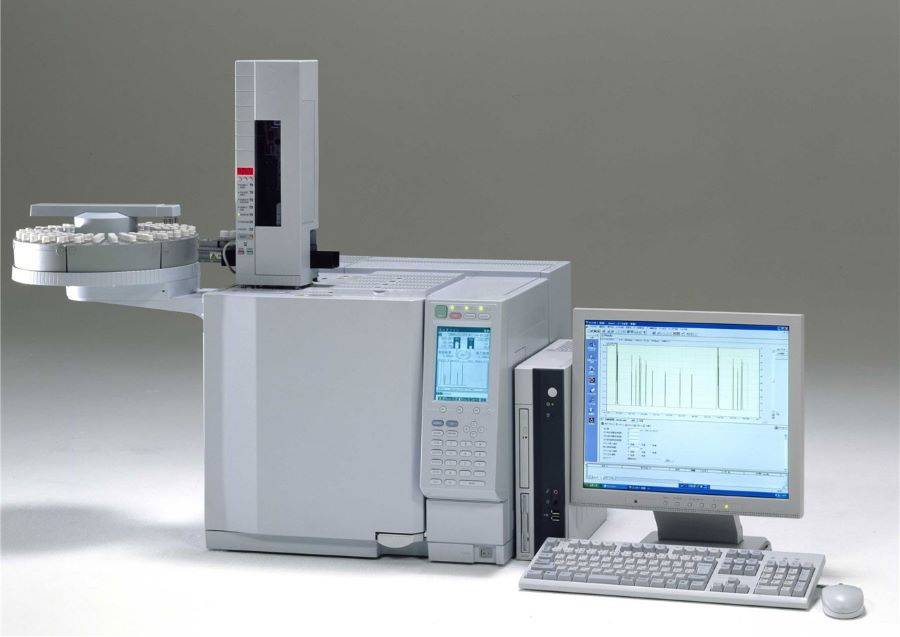
Time-of-Flight Mass Spectrometer
The Time-of-Flight Mass Spectrometer (TOF-MS) is particularly adept at characterizing peptides, proteins, and other biological macromolecules. This instrument's capability to accurately determine the mass-to-charge ratio of these complex molecules makes it an invaluable tool in proteomics and biochemical research.
For optimal performance, the sample must be soluble in a suitable solvent. Common solvents include water, acetonitrile, and methanol, which are chosen based on the sample's chemical properties and the desired ionization method. Ensuring the sample's solubility is crucial as it directly impacts the quality and resolution of the mass spectra.
High-quality mass spectra are contingent upon the purity of the sample. It is essential that the sample is free from contaminants such as salts, buffers, and detergents, which can interfere with the ionization process and obscure the desired molecular signals. Therefore, rigorous sample purification protocols are often employed to remove these potential interferences, ensuring that the resulting spectra provide clear and accurate data.
In summary, while the TOF-MS is highly effective for analyzing biological macromolecules, careful attention to sample solubility and purity is paramount for achieving high-quality mass spectra.
Chromatography
Gas Chromatograph (GC)
For optimal analysis using a Gas Chromatograph (GC), samples must meet specific criteria. Primarily, they should be volatile and heat-stable, with boiling points typically not exceeding 300 ℃. This ensures that the sample components can effectively vaporize and separate within the GC system. The process involves injecting a small volume of the sample into the GC, where it is separated based on differences in boiling points as it traverses the column. Components with lower boiling points elute faster, while those with higher boiling points take longer to reach the detector.
Additionally, liquid chromatograph samples must be thoroughly dry to prevent any interference with the analysis. Providing detailed structural information about the components to be detected is crucial for accurate identification and quantification. This includes understanding the molecular structure, functional groups, and other relevant chemical properties that can influence the separation and detection process.
Understanding these requirements is essential for preparing samples that yield reliable and accurate results in GC analysis.
Ion Chromatograph
When preparing samples for ion chromatography, it is crucial to ensure that the samples are properly dissolved. Typically, samples can be dissolved in water, dilute acid, or alkali. However, it is essential to note that the acid or alkali used should not contain the ion being tested, as this could lead to inaccurate results. This precaution is particularly important to maintain the integrity and specificity of the analysis.
For compounds that exist in a non-ionic state, pre-treatment is required. This pre-treatment process involves converting the non-ionic compounds into ionic forms that can be effectively separated and detected by the ion chromatograph. Common pre-treatment methods include derivatization, where specific functional groups are added to the compound to facilitate ionization. Additionally, filtration or centrifugation may be necessary to remove any particulate matter that could clog the chromatographic columns or interfere with the detection process.
To summarize, the preparation of samples for ion chromatography involves careful consideration of the solvent used and the necessity of pre-treatment for non-ionic compounds. This ensures that the analysis is both accurate and reliable.
Other Analytical Instruments
Plasma Atomic Emission Spectrometer (ICP)
When preparing samples for analysis using the Plasma Atomic Emission Spectrometer (ICP), it is crucial to provide comprehensive details about the sample's source, type, and properties. This information is essential for ensuring accurate and reliable results.
For solid samples, the primary requirement is that they must be converted into a solution. This process should be carried out without introducing any organic matter, as organic compounds can interfere with the ICP analysis. The absence of organic matter ensures that the spectral lines of the elements being analyzed are not obscured by other compounds.
Before sending the samples to the test center, it is imperative that they are fully processed into a solution. This pre-processing step includes dissolving the solid samples in appropriate solvents and ensuring that the solution is free from any particulate matter. Proper sample preparation not only enhances the accuracy of the analysis but also minimizes the risk of instrument contamination, which can lead to erroneous results.
In summary, meticulous attention to sample preparation is key to obtaining high-quality data from ICP analysis. By adhering to these guidelines, researchers can ensure that their samples are ready for precise and reliable elemental analysis.
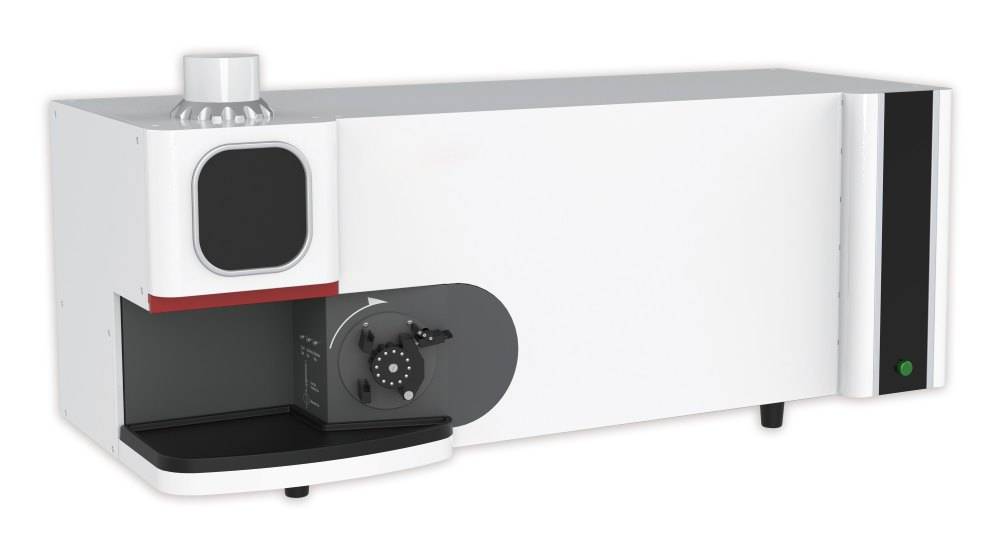
Atomic Fluorescence Spectrometer
The Atomic Fluorescence Spectrometer (AFS) is a specialized analytical tool designed to detect and quantify the ionic states of specific elements, including arsenic (As), selenium (Se), germanium (Ge), tellurium (Te), and mercury (Hg). This instrument operates by exciting the atoms of these elements in a sample, causing them to emit light that can be measured and analyzed.
To ensure accurate and reliable results, the samples analyzed by the AFS must be in a specific form. The primary requirement is that the samples must be aqueous solutions or dissolved in acid. This is crucial because the AFS relies on the ability to ionize and excite the target elements, which is most effectively achieved in a liquid medium.
| Element | Ionic State | Sample Form |
|---|---|---|
| Arsenic (As) | As3+ / As5+ | Aqueous solution / Acid dissolved |
| Selenium (Se) | Se2+ / Se4+ | Aqueous solution / Acid dissolved |
| Germanium (Ge) | Ge2+ / Ge4+ | Aqueous solution / Acid dissolved |
| Tellurium (Te) | Te2+ / Te4+ | Aqueous solution / Acid dissolved |
| Mercury (Hg) | Hg2+ | Aqueous solution / Acid dissolved |
The table above outlines the elements typically analyzed by the AFS and the required sample forms. Each element can exist in different ionic states, which the AFS can differentiate based on the wavelength of the emitted light.
In summary, the Atomic Fluorescence Spectrometer is a powerful tool for analyzing the ionic states of specific elements, but it requires that the samples be in a liquid form to function effectively. This ensures that the elements can be properly ionized and excited, leading to accurate and meaningful results.
Differential Scanning Calorimeter (DSC)
When preparing solid samples for Differential Scanning Calorimetry (DSC), it is crucial that the samples do not decompose or sublime within the test temperature range. This ensures accurate measurement of thermal properties such as melting points, glass transition temperatures, and enthalpy changes.
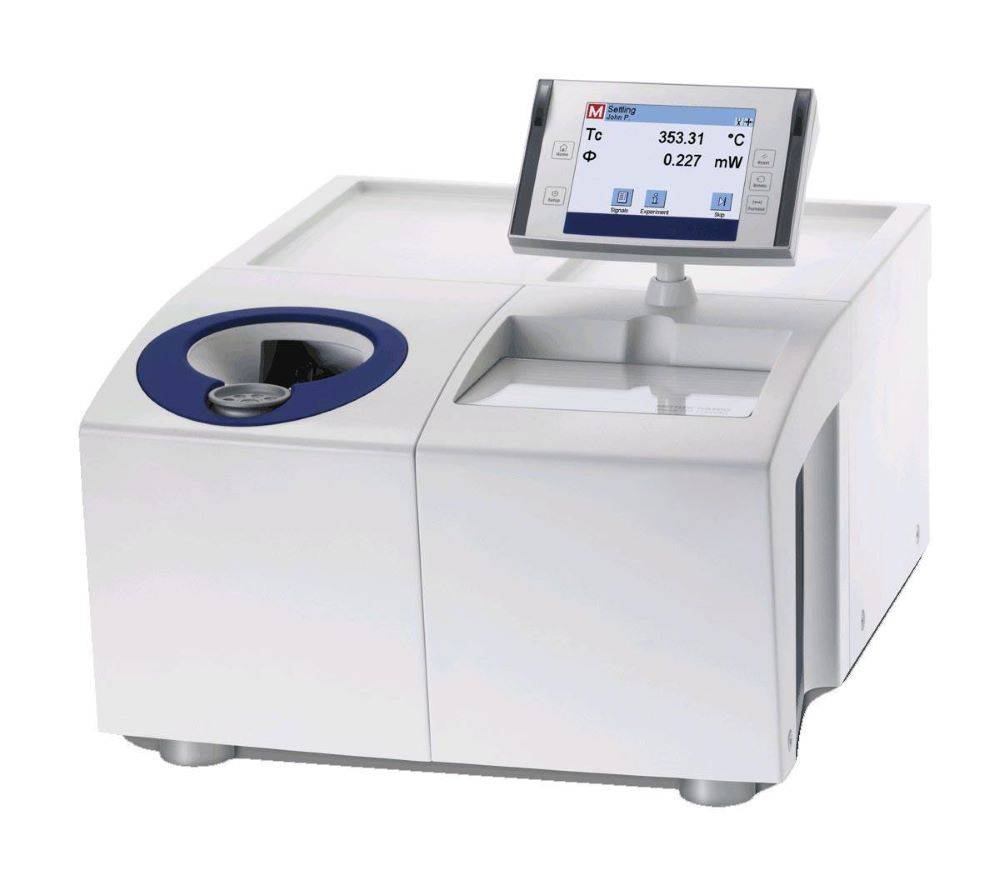
To achieve reliable results, specify the following testing conditions:
- Temperature Range: Define the minimum and maximum temperatures for the experiment. This range should be wide enough to capture the thermal events of interest but narrow enough to prevent sample degradation.
- Rate of Temperature Rise and Fall: Set the heating and cooling rates. Common rates range from 1°C/min to 20°C/min, depending on the sample's thermal sensitivity.
- Constant Temperature Time: Determine the duration for which the sample should be held at a constant temperature, if necessary, to observe isothermal processes.
These parameters are essential for optimizing the DSC experiment and obtaining meaningful data.
Thermogravimetric Analyzer (TGA)
When preparing a sample for Thermogravimetric Analysis (TGA), it is crucial to ensure that the sample size is not less than 30mg. This minimum size is necessary to achieve accurate and reproducible results. Additionally, several key parameters must be specified to optimize the experimental conditions:
-
Temperature Range: Define the temperature range over which the analysis will be conducted. This range should cover the expected thermal events of the sample, such as decomposition, evaporation, or phase transitions.
-
Experimental Atmosphere: Specify the atmosphere in which the experiment will be performed. Common atmospheres include inert gases like nitrogen or argon, reactive gases like oxygen, or even vacuum conditions. The choice of atmosphere can significantly influence the thermal behavior of the sample.
-
Heating Rate: Set the rate at which the temperature will be increased during the experiment. A slower heating rate generally provides more detailed data but requires longer analysis times. Conversely, a faster rate can be useful for screening samples but may miss subtle thermal events.
-
Gas Flow Rate: Determine the flow rate of the gas used in the experimental atmosphere. This parameter affects the efficiency of heat transfer and the removal of volatile products, ensuring accurate weight loss measurements.
By carefully specifying these parameters, you can ensure that the TGA analysis provides reliable and meaningful data about the thermal properties of your sample.
X-ray Powder Diffractometer (XRD)
For X-ray Powder Diffractometry (XRD), samples can be prepared in various forms, including powders, lumps, and films. The preparation method depends on the nature of the sample and the specific requirements of the analysis.
-
Powder Samples: These typically require about 0.2 grams of material. The powder should be finely ground to ensure uniform distribution and optimal diffraction results.
-
Lumpy Samples: These need to be prepared on a flat surface with an area of less than 45px x 45px. The surface must be smooth to allow for accurate X-ray reflection.
-
Film Samples: Thin films can also be analyzed using XRD, particularly when studying surface-sensitive properties. This method is often used in conjunction with grazing incidence X-ray diffraction (GIXRD), which employs small incident angles to enhance surface sensitivity.
XRD is a versatile technique that can model any material as a mixture of ordered (crystalline) and disordered (amorphous) parts. The degree of order or disorder in the atomic placements within the sample can be measured to investigate structural properties. For instance, GIXRD can be used to characterize thin films by establishing an evanescent wave that penetrates only a short distance into the material, thereby focusing on the surface structure.
In summary, the preparation of samples for XRD analysis varies based on the form of the sample and the specific analytical goals, whether it be bulk analysis or surface-sensitive studies.
X-ray Single Crystal Diffractometer
For optimal results with an X-ray single crystal diffractometer, the sample must be a single crystal with meticulously prepared surfaces. The crystal should exhibit smooth and clean facets, free from any imperfections or contaminants that could interfere with the diffraction pattern. The dimensions of the crystal are crucial; the length, width, and height should ideally range between 0.1 to 0.4 millimeters. This size range ensures that the crystal is large enough to produce a clear diffraction pattern but small enough to fit within the constraints of the diffractometer's sample chamber.
| Dimension | Ideal Range |
|---|---|
| Length | 0.1 - 0.4 mm |
| Width | 0.1 - 0.4 mm |
| Height | 0.1 - 0.4 mm |
Ensuring the crystal meets these specifications is vital for accurate data collection and interpretation. Any deviation from these dimensions can lead to suboptimal diffraction results, potentially compromising the quality of the structural analysis. Therefore, meticulous preparation and careful selection of the crystal are essential steps in the sample preparation process for this analytical technique.
Transmission Electron Microscope (TEM)
For optimal imaging and analysis using a Transmission Electron Microscope (TEM), samples must be meticulously prepared. The primary requirement is that the samples be ultrathin layers, typically with a thickness ranging from a few tens of nanometers down to a single nanometer. This extreme thinness is crucial because the electron beam used in TEM can only penetrate materials of such minimal thickness.
Achieving this level of thinness involves specific preparation techniques. Two primary methods are commonly employed:
-
Physical Thinning: This method involves mechanically reducing the thickness of the sample. Techniques such as ion milling or mechanical polishing are used to gradually remove material until the desired thinness is achieved. This process requires precision and careful monitoring to avoid damaging the sample.
-
Ultrathin Sectioning: An alternative approach is to use specialized microtomes equipped with ultra-sharp diamond knives. These tools can slice through the sample, creating sections that are ultrathin. This method is particularly effective for biological samples and other materials that are sensitive to mechanical stress.
| Preparation Method | Description |
|---|---|
| Physical Thinning | Involves mechanical reduction using ion milling or mechanical polishing. |
| Ultrathin Sectioning | Uses microtomes with diamond knives to slice samples into ultrathin sections. |
Both methods require a deep understanding of the sample's material properties and the specific requirements of the TEM. The goal is to create a sample that is not only thin enough for electron transmission but also structurally intact to provide meaningful data.
Field Emission Scanning Electron Microscope (FE-SEM)
When preparing samples for analysis using a Field Emission Scanning Electron Microscope (FE-SEM), several critical conditions must be met to ensure accurate and reliable results. The sample must be a dry solid, as the presence of moisture can interfere with the electron beam and lead to artifacts in the imaging. Additionally, the sample should be non-magnetic, as magnetic materials can deflect the electron beam, causing distortions in the image.
Moreover, the sample must be non-radioactive and non-corrosive to protect both the instrument and the operator. Radioactive materials can pose significant safety hazards, while corrosive substances can damage the microscope's components. For biological soft tissue samples, a specialized treatment known as critical point drying is required. This process removes the moisture from the sample without causing structural collapse, which is essential for preserving the delicate morphology of biological tissues.
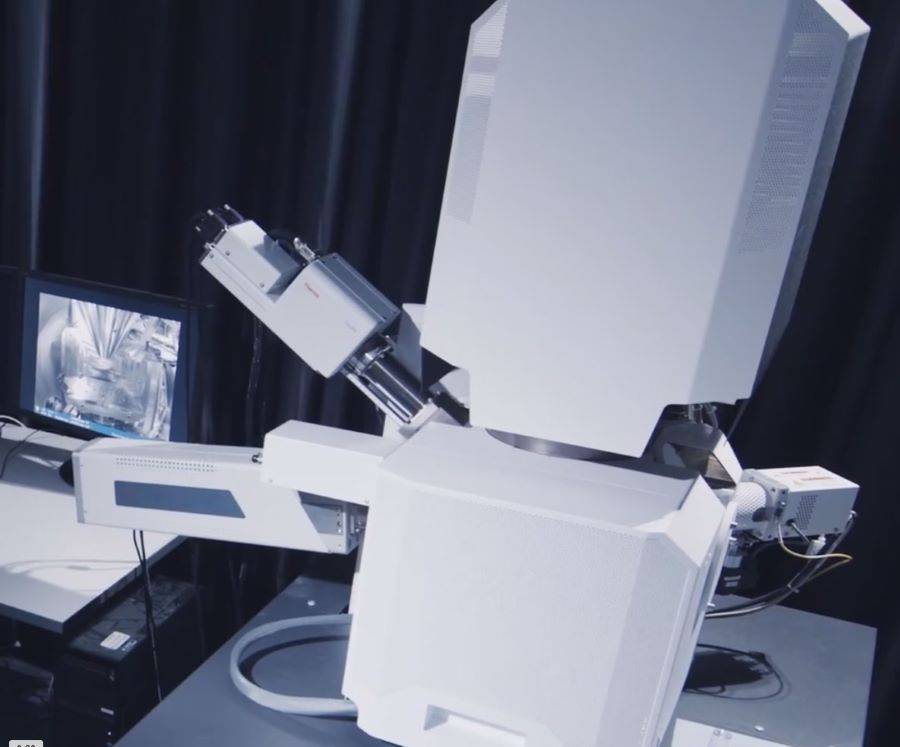
In summary, the stringent requirements for sample preparation in FE-SEM are designed to maintain the integrity of the sample and the accuracy of the data collected. By adhering to these guidelines, researchers can obtain high-quality images and analyses that provide valuable insights into the structure and composition of their samples.
Scanning Electron Microscopy - X-ray Spectroscopy (SEM-EDS)
For optimal results in Scanning Electron Microscopy coupled with X-ray Spectroscopy (SEM-EDS), the sample preparation process is crucial. The sample must be dry and solid, ensuring it is non-magnetic, non-radioactive, and non-corrosive. These stringent requirements are essential to prevent interference with the electron beam and to ensure accurate data collection.
Biological soft tissue samples, which are inherently difficult to analyze due to their moisture content, require a specialized treatment known as critical point drying. This process removes the moisture without causing structural collapse, preserving the sample's original morphology.
For compositional analysis, additional steps are necessary. Samples must be plated with a carbon film. This thin layer of carbon not only stabilizes the sample but also enhances the conductivity, which is vital for maintaining the integrity of the electron beam and ensuring precise elemental analysis.
| Sample Characteristic | Requirement |
|---|---|
| Moisture Content | Dry |
| Physical State | Solid |
| Magnetic Properties | Non-magnetic |
| Radioactivity | Non-radioactive |
| Corrosiveness | Non-corrosive |
| Biological Tissue | Critical Point Drying |
| Compositional Analysis | Carbon Film Plating |
This meticulous preparation ensures that the SEM-EDS can provide high-resolution images and accurate chemical composition data, making it a powerful tool for materials science and biological research.
Electron Probe Microanalyzer
For quantitative analysis using an Electron Probe Microanalyzer (EPMA), the preparation of samples is a meticulous process that demands precision and attention to detail. The sample must undergo a series of critical steps to ensure accurate and reliable results.
Firstly, the sample must be thoroughly smoothed and polished. This process is essential to create a flat, mirror-like surface, which is crucial for the EPMA to obtain precise elemental mapping and analysis. The smoothing and polishing techniques typically involve the use of diamond paste and other abrasive materials, ensuring that the surface is free from any scratches or imperfections.
Following the smoothing and polishing, the sample must be cleaned to remove any residual debris or contaminants that could interfere with the analysis. This cleaning process often involves the use of solvents and ultrasonic baths, ensuring that the surface is pristine and ready for analysis.
The sample itself must meet several stringent criteria. It should be a solid, meaning it must maintain its structural integrity throughout the analysis. Additionally, the sample must be non-decomposable, non-explosive, non-volatile, non-radioactive, non-magnetic, and chemically stable. These requirements are essential to prevent any potential hazards during the analysis and to ensure that the sample does not undergo any chemical or physical changes that could affect the results.
In summary, the preparation of samples for EPMA analysis involves a series of meticulous steps, including smoothing, polishing, and cleaning, to ensure that the sample meets the necessary criteria for a successful analysis.
Related Products
- Automatic Laboratory Hydraulic Press for XRF & KBR Pellet Press
- Custom PTFE Teflon Parts Manufacturer for Sampling Solution Sample and Dry Powder Spoons
- Electrode Polishing Material for Electrochemical Experiments
- Custom PTFE Teflon Parts Manufacturer for F4 PTFE Volumetric Bottle
- Custom PTFE Teflon Parts Manufacturer for PTFE Measuring Cylinder 10/50/100ml
